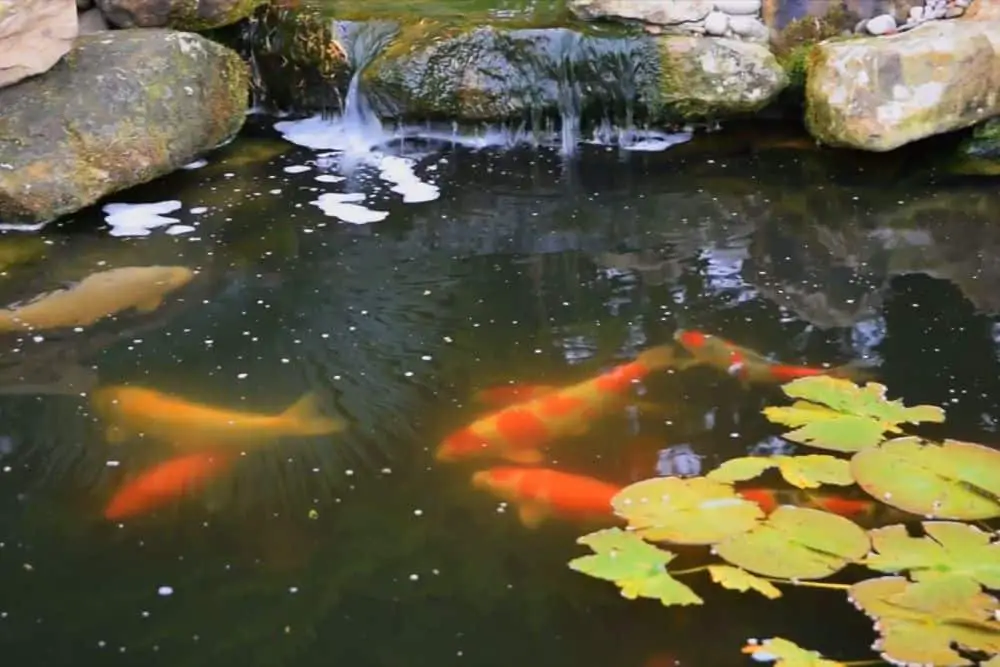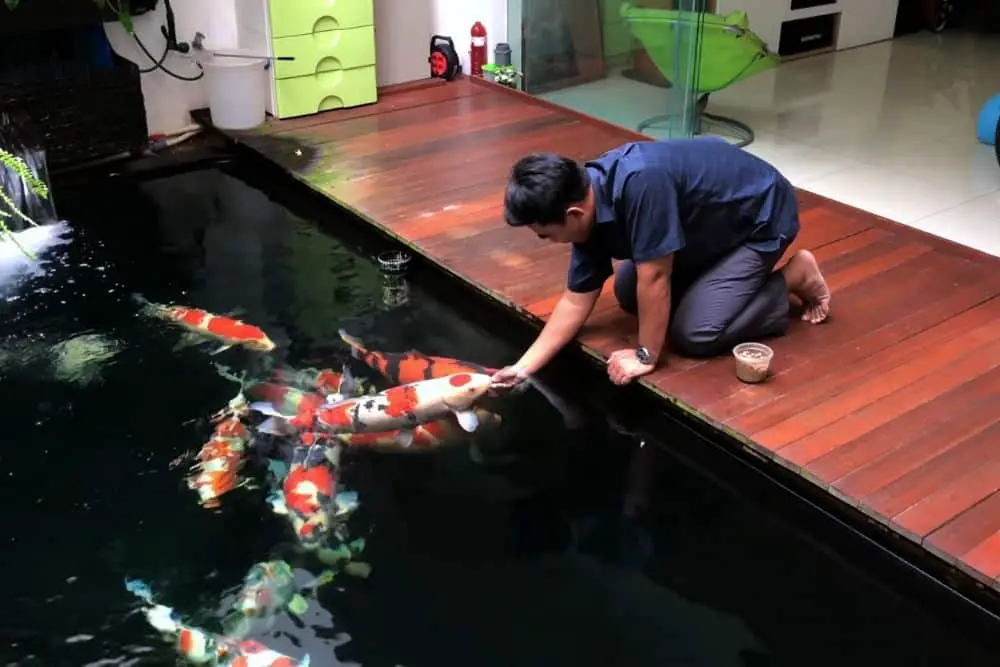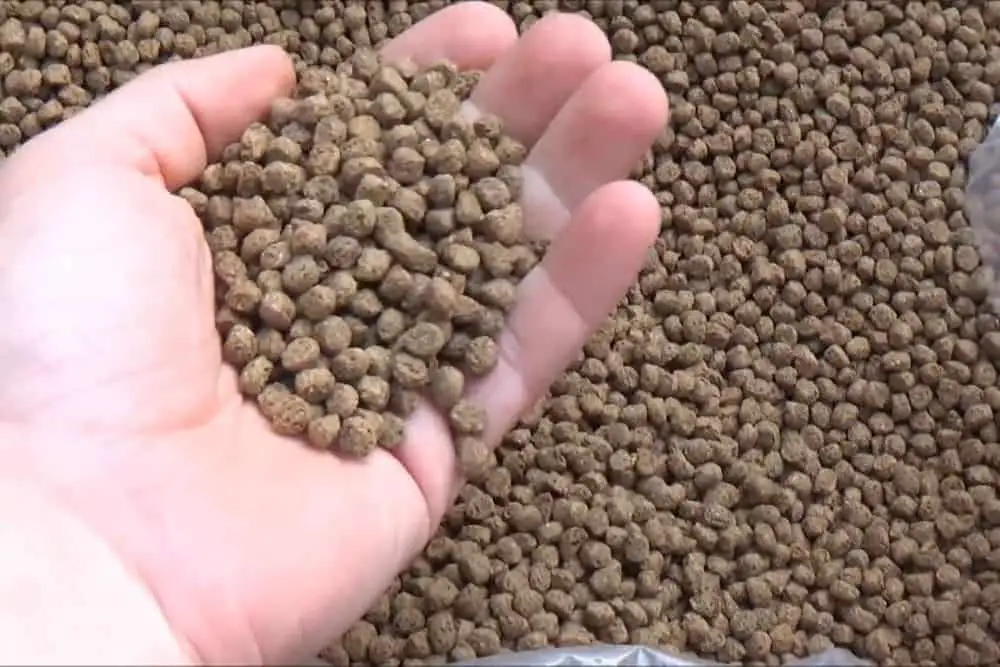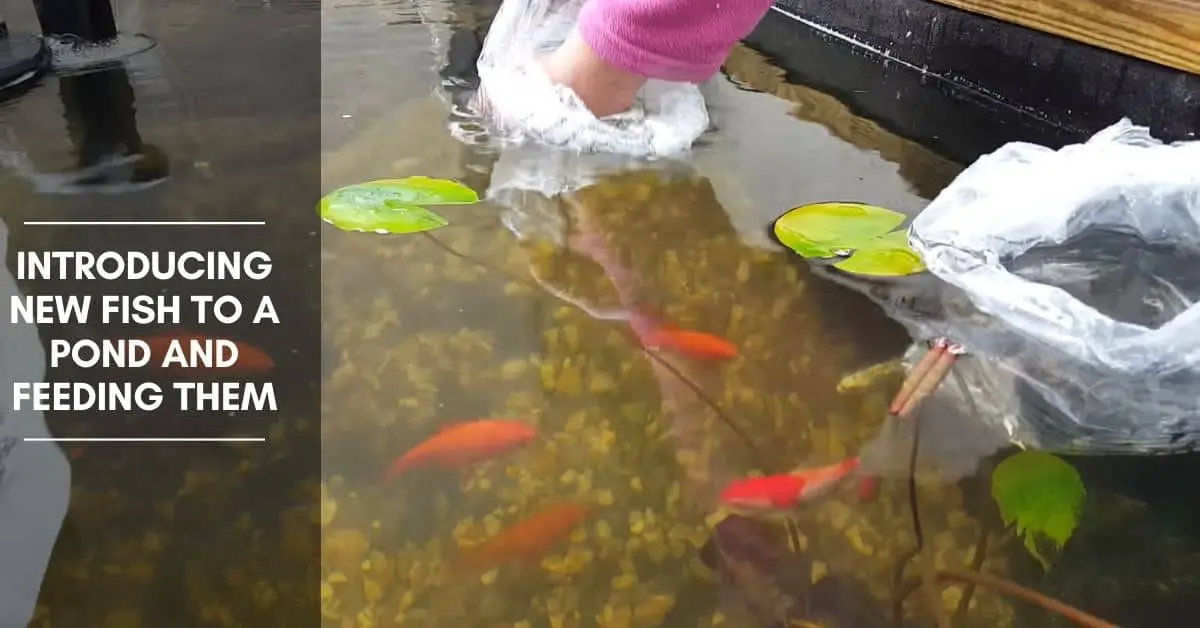For many people, fish are the best part of pond keeping. They can add the finishing touches to any pond, but if you make the wrong choices, the species you introduce can either overpower the pond or be so inconspicuous that they make no impact at all. Choosing the right coldwater fish is vital, as much for the fishes’ health as for the viewing pleasure they provide. There are a few things to bear in mind before introducing any fish to the pond. The first is stocking levels: allow 2 cm (0.8 in) of fish per 50 liters (11 gallons) of water.
Always understock rather than overstock the pond. This allows the fish to breed up to the natural level; it reduces the risk of disease outbreaks; and improves the growth rates of the fish. A pond fish like Koi need special foods and certain conditions to be seen at their best. Make sure you can meet these needs before you proceed, and never buy on impulse; many fish are totally unsuitable for ponds. If a fish grows too big for your pond, never release it into the wild: it could spread disease or displace native fish. Be sure to check local regulations on keeping certain fish species.
Start by introducing a few hardy fish and wait for a month or two before stocking up with expensive ones. This gives you a chance to see if there are any problems. Buy fish from just one or two retailers, as this will reduce the chance of introducing a disease that the fish have not encountered before. Quarantine new fish for four weeks before placing them in a pond already containing fish. The guidance given here will help you create a healthy environment for your fish. Bear in mind that the equipment and products featured will vary in different parts of the world.
Buying and Introducing Pond Fish
When you first stock your pond, the most important objective is to buy healthy fish. Try to obtain locally bred fish, as imported ones will have had to endure the stress of transport and will not be accustomed to your local conditions.
Very small fish measuring 5 cm (2 in) or less are normally poor travelers, so avoid them. Look instead for fish measuring 6-8 cm (2.4-3.2 in). Make sure that the first few fish you buy are hardy ones. Look out for damaged fins and growths on the body.

A sick fish will stay on its own, away from other fish. Avoid buying either the one on its own or the fish housed with it. Fish should be active and swimming around. (Tench are the exception, as they huddle together in tanks.) Ask the store assistant to bag up the fish and check them again before you pay. if you are not happy, do not buy them.
Take the fish straight home, keeping them in a car for a couple of hours while you do your shopping is not the way to ensure healthy specimens.
As soon as you arrive home, float the fish on the pond for 15 to 20 minutes to allow the temperature to equalize between the bag and the pond. Open the bag and let in some water from the pond. This allows the fish to adjust to your pond water conditions.
API STRESS COAT Aquarium Water Conditioner 16-Ounce Bottle
29% OffAPI STRESS ZYME Freshwater and Saltwater Aquarium Cleaning Solution 16-Ounce Bottle
Tetra Chlorine Remover 3.38 Ounces, Conditions Aquarium Water for Use in Aquariums, 100ml
20% OffLeave it for another 15 to 20 minutes and then release the fish by tipping the bag slowly into the water so that the fish can swim out. it may be a few days before newly introduced fish come to the surface to feed.
Allow them to settle for a few weeks before adding more fish. This will give you time to see if there are any problems, Remember to test the water to ensure that the filter can cope with the waste produced by the new fish.
Feeding Your Pond Fish
In the wild, fish feed all the time, so their digestive systems are designed to cope with small but frequent meals. So that the fish can derive maximum benefit from their food, follow a similar feeding pattern, the best plan is to feed them four or five times a day.

If this is difficult, invest in an automatic fish feeder (which is also useful if you go on vacation). Always buy good-quality food and avoid loose products, as these rapidly deteriorate in air. use two kinds of food at the same time to give the fish some variation and a more balanced diet. To vary the diet, even more, you can feed brown bread, bloodworms (frozen are safer as fresh can carry disease), lettuce, spinach, and even peas.
What Pond Fish Eat?
You can buy frozen foods from most pet stores, the most common being bloodworm, daphnia, and black mosquito larvae. Keep in the freezer until needed, break off only what you need and defrost it in cold water before feeding it to the fish Do not feed frozen foods directly to the fish.
Pond flake is the ideal starter for small fish up to about 5 cm (2 in). It is easy to digest and as the flakes spread across the pond, all the fish get a chance to eat some.
Once the fish have grown to about 7 cm (2.8 in) or more they should be able to eat sticks or pellets, which will provide more food per mouthful than flake. The fish still need four or 5 feedings per day.

Brown bread offers an additional food source for fish. It is high in minerals and is easy to digest, especially in the winter months.
Seasonal Feeding List for Your Pond Fish
Spring
- As the water temperature rises over 10°C (50°F), start to feed small amounts once or twice a day.
Summer
- Now the fish should be eating four or five times a day to spur growth and prepare them to spawn. If you go away during the summer, ask a friend or neighbor to feed your fish regularly according to your directions.
Autumn
- The fish will need to eat a lot of food to put on weight to survive through the hibernation over winter.
Winter
- If the temperature drops below 10°C (50°F), the fish will not be very interested in food, but they may take food on milder days. If they are looking for food, brown bread is good – but only once per day.
How Many Fish Will My Pond Support?
To estimate stocking levels use this simple rule:
2 cm (0.8 in) of fish length (not including the tail) per 50 liters (11 gallons) of water.
For example, if your pond holds 1500 liters (330 gallons) of water it will support 1500 / 50 x 2 = 60 cm (24 in) of fish. This means that you can keep, say, 10 fish each measuring 6 cm (2.4 in) or 5 fish each measuring 12 cm (3.2 in), and so on.
Never overstock your pond, as this can lead to poor growth and outbreaks of disease – It is much easier (and cheaper) to prevent disease than to cure it

Hi, my name is Sean, and I’m the primary writer on the site. I’m blogging mostly about freshwater and saltwater aquariums, fish, invertebrates, and plants. I’m experienced in the fishkeeping hobby for many years. Over the years I have kept many tanks, and have recently begun getting more serious in wanting to become a professional aquarist. All my knowledge comes from experience and reading forums and a lot of informative sites. In pursuit of becoming a professional, I also want to inspire as many people as I can to pick up this hobby and keep the public interest growing.
Read more about Sean.
Please join also my Facebook group.















